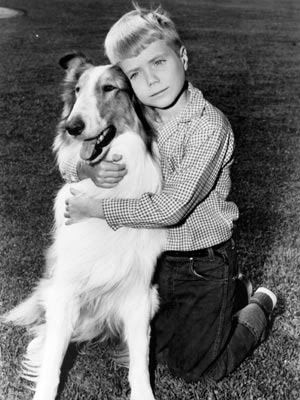Back in the old days, when Timmy wanted to visit granny’s house, all he had to do was have Lassie lead him there. In today’s more complicated computer world, it takes a bit more understanding.
We’re going to learn a bit about a very important subject in Linux. It’s called PATH. The path to a file or whatever on your Linux operating system is something that you need to understand when manipulating files from the command line. Another term we’ll look at briefly is the working directory.

When Timmy, as a regular user, opens his terminal from his GUI or from the post login command line (Run Level 3 – multi-user, no X running), his working directory is in /home/timmy. Whichever directory you are in at the time is known as the working directory. Timmy may navigate to another directory using the cd command. Let’s say he navigates to /usr/bin. At that time, his working directory becomes /usr/bin. See how this works?
Think of the Linux file system as a multi-room house. If you’re in bedroom4 right now, your working directory would be /house/bedroom4. If you walked out of that room and down the hall to bathroom02, then your working directory becomes /house/bathroom02. At that time, you may then use the commandmicturate. Heh! A little bathroom humor there.
OK, so now we know all about the working directory, right? Moving on…
Let’s say that Timmy wants to copy a .jpg that is in /usr/share/wallpaper over to the /home/timmy/grannys_house directory. He would open his terminal, which would then be sitting there with that blinking cursor waiting for Timmy’s next command:
timmy@lassies_machine~:$ |
Timmy’s working directory at this point is /home/timmy, as designated by the command line shorthand character ~ . If Timmy wants to copy the .jpg without actually going to the directory that it’s in to copy it, he must provide the proper path in his command.
timmy@lassies_machine~:$ cp /usr/share/wallpaper/cabin.jpg /home/timmy/grannys_house
The above command, using absolute path names, directs the shell (command line interpreter) to copy the cabin.jpg image from the /usr/share/wallpaper directory to the /home/timmy/grannys_house directory. If Timmy wanted to just make a duplicate of a file in his /home/timmy directory, then he could leave off the / character when showing the command line the proper path. This can be done because he’s already in the /home/timmy directory. It is his working directory. He can now use a relative path to direct the shell to make the copy.
timmy@lassies_machine~:$ cp cabin.jpg cabin.jpg_backup
In the above example, notice that there is no / being used. Timmy is simply making a backup copy of cabin.jpg. Both files are relative to his working directory, so the shell understands that Timmy just wants to make this duplicate right there in that same directory.
It’s really not rocket science, to use that worn out old cliché. The command line can be pretty simple once you get the hang of it folks. You know what I always say… Don’t fear the command line. I hope you’ve learned something here today. Remember to click the links within the article. You’ll find some more useful information and a few definitions for you there.
Later…
~Eric
Further reading:
Paul Sheer’s Rute Users Tutorial and Exposition
Image credits: Timmy (Jon Provost) and Lassie image owned and copyright by Classic Media
*Note: This is a repost from my Nocturnal Slacker blog (@Lockergnome.com)





